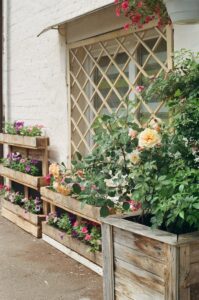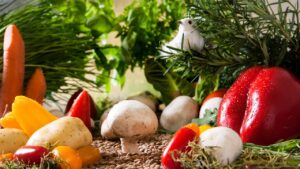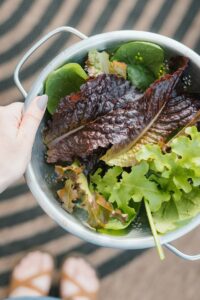Crafting your homemade jams, jellies, and preserves is a proper art form that allows us to savor the flavors of summer all year long. From luscious strawberries and juicy peaches to tangy apricots and tart raspberries, we’ll guide you through transforming nature’s bounty into delectable, sweet spreads. So, please put on your aprons, gather your favorite fruits, and embark on this delightful culinary adventure together!
Choosing the Right Fruit
When making homemade jams, jellies, and preserves, choosing the right fruit is of the utmost importance. The flavor and quality of the final product greatly depend on the fruit you select. Here are a few factors to consider when choosing your fruit.
Consider the ripeness
For the best results, it’s essential to use ripe fruit. Ripe fruit adds natural sweetness to your jam and ensures a more vibrant and flavorful outcome. Look for fruits that are firm yet give slightly when gently pressed. Remember that under-ripe fruit may result in a more tart jam, while overripe fruit can lend an overly sweet taste.
Choose fruits with high pectin content.
Pectin is a naturally occurring fruit substance that helps thicken jams and jellies. Some fruits, like apples, citrus, and berries, contain high amounts of pectin, making them ideal for jam-making. However, fruits with lower pectin content can still be used by adding commercial pectin or other natural sources, such as lemon juice or grated apple.
Mixing different fruits for unique flavors
One of the joys of making homemade jams, jellies, and preserves is the opportunity to experiment with different fruit combinations. Mixing various fruits can create unique flavor profiles that will impress your taste buds. Combine strawberries and rhubarb for a sweet yet tangy jam, or blend peaches and raspberries for a delightful summer preserve. The possibilities are endless, so don’t hesitate to get creative with your fruit choices.
Essential Equipment
You’ll need a few essential pieces of equipment to embark on your homemade jam-making adventure. Here’s a list of what you’ll need to get started.
Large stainless steel pot
A large stainless steel pot is a must-have for making jams, jellies, and preserves. Stainless steel is an excellent conductor of heat, ensuring even cooking and preventing scorching. Choosing a pot with a heavy bottom is also essential to avoid hot spots.
Canning jars with lids and rings
Canning jars are necessary for storing your homemade creations. Look for jars designed explicitly for preserving, as they are sturdy and designed to withstand high canning temperatures. Ensure you have enough jars and matching lids and rings before you begin.
Funnel and ladle
A funnel and ladle will make your jam-making process more accessible and less messy. The funnel helps transfer the hot jam into the jars without spills or drips, while the spoon allows you to scoop the jam from the pot into the funnel.
Candy thermometer
A candy thermometer is essential for achieving the perfect gel point in your jams, jellies, and preserves. It allows you to monitor the temperature accurately, ensuring proper thickening without overcooking. Invest in a reliable candy thermometer to achieve consistent results.
Preparation Steps
Before you can start cooking your fruit into delicious jams, jellies, or preserves, you need to follow a few preparation steps. These steps ensure that your fruit is ready for the cooking process and that you have all the ingredients measured and ready to go.
Washing and peeling the fruits
Start by thoroughly washing your chosen fruits under cold running water. This helps remove dirt, debris, or pesticides clinging to the skin. Once clean, peel the fruits, if necessary, and discard any bruised or damaged parts.
Removing seeds and pits
Certain fruits, like apples, cherries, and peaches, have seeds or pits that must be removed before cooking. Cut the fruits in half and scoop the seeds or pits with a spoon or a pitter. Ensure you remove all parts that are not desirable in your final product.
Chopping or crushing the fruits
After peeling and removing any unwanted parts, it’s time to prepare the fruits for cooking. Depending on your desired end texture, you can chop the fruits into small pieces or crush them using a potato masher or a food processor. Consider the consistency you prefer in your jam or preserve when preparing the fruits.
Measuring the ingredients
To guarantee the perfect balance of flavors and consistency, measuring your ingredients accurately is crucial. Follow the recipe instructions and use measuring cups and spoons to ensure you add the right amounts of fruit, sugar, pectin, and any optional ingredients. Proper measuring sets the foundation for a successful homemade jam, jelly, or preserved batch.
Cooking Process
Now that your fruits are prepared and your ingredients are measured, it’s time to begin the cooking process. This is where the magic happens, as the flavors meld together, and your kitchen fills with the irresistible scent of sweet fruits.
Placing the fruits in the pot
Start by placing the prepared fruits into your large stainless steel pot. If you’re using a combination of fruits, add them all to the pot at this stage. This is also the time to add any liquid ingredients, such as lemon juice or water if called for in the recipe.
Boiling the fruits
Turn the heat to medium-high and bring the fruits to a gentle boil. Stir occasionally to prevent sticking or scorching. Boiling the fruits helps break them down and release their natural juices, which is crucial for achieving the desired texture in your jam, jelly, or preserves.
Adding sugar and optional ingredients
It’s time to add the sugar once the fruits have softened and released their juices. Sugar acts as a natural preservative and enhances the flavor and sweetness of your final product. Stir in the sugar gradually, ensuring it dissolves completely.
At this stage, you can also add any optional ingredients to elevate the flavor of your jam, jelly, or preserves. For a refreshing twist, consider spices like cinnamon or nutmeg, herbs like mint or basil, or citrus zest. Get creative with your additions and experiment with different combinations.
Stirring and monitoring temperature
As the mixture continues to boil, stir it regularly to prevent the fruit from sticking to the bottom of the pot. Stirring helps distribute the heat evenly and prevents scorching. It’s also essential to monitor the temperature using a candy thermometer. Most recipes will guide you on the target temperature range to achieve the ideal gel point.
Testing for Gel Point
The gel point is the stage at which your jam, jelly, or preserve achieves the desired thickness and consistency. You can use several methods to test for the gel point to ensure your creation sets are appropriate.
Using the spoon or plate, test
One popular method is the spoon or plate test. Place a small dollop of the hot mixture on a chilled spoon or plate and cool for a few seconds. Gently nudge the dollop with your finger. It has reached the gel point if it wrinkles or holds its shape. If it remains runny, continue cooking and test again after a few minutes.
Using a candy thermometer
Another reliable method involves using a candy thermometer. Insert the thermometer into the boiling mixture, ensuring the tip is not touching the bottom of the pot. Once the temperature reaches the recommended range specified in your recipe, you can be confident that your jam, jelly, or preserve is ready to be transferred to the jars.
Sterilizing the Jars
Properly sterilized jars ensure the safety and longevity of your homemade jams, jellies, and preserves. Before filling them with your delicious creations, follow these steps to sterilize the jars and lids.
Wash jars and lids in hot, soapy water.
Start by thoroughly washing the jars and lids in hot, soapy water. Use a bottle brush or sponge to remove residue or lingering food particles. Rinse them well to remove any soap residue, as this can affect the taste and quality of your final product.
Place jars in boiling water bath
Once clean, place the jars in a large pot of boiling water. Ensure the jars are fully submerged and have enough water to cover them by at least an inch. Let them cook for 10 minutes to ensure proper sterilization. Place the lids and rings in a separate small saucepan and cook them for a few minutes.
Air drying the jars
After sterilization, carefully remove the jars, lids, and rings from the boiling water using kitchen tongs. Place them on a clean towel or wire rack to air dry. Letting them dry completely before filling them with your homemade jam, jelly, or preserve is crucial.
Filling and Sealing the Jars
With your beautifully sterilized jars ready, it’s time to transfer your homemade creations into them. Follow these steps to ensure a proper seal and a satisfying result.
Using a funnel to transfer jam into jars
Using a funnel can make transferring your jam, jelly, or preserve into the jars much easier and less messy. Securely place the funnel on top of the jar and carefully ladle the hot mixture into the jar, avoiding spills or drips. Fill the jar, leaving a ¼-inch headspace to allow for expansion during processing.
Wiping jar rims and placing lids
After filling each jar, wipe the rim with a clean, damp cloth or paper towel. This step ensures that no residue or jam is left on the rim, which can prevent a proper seal. Then, take a sterilized lid and place it on top of the jar, making sure it sits evenly and snugly.
Tightening the lids and processing in a boiling water bath
To create a secure seal, firmly tighten the lids onto the jars. Be careful not to overtighten them, as this can prevent the air from escaping during the processing stage. Once all the jars are filled and sealed, it’s time to process them in a boiling water bath. Lower the filled jars into a pot of boiling water, ensuring they are fully submerged. Boil for the time specified in your recipe to complete the sealing process.
Storage and Shelf Life
After the processing stage, it is essential to handle your jars with care and store them properly to ensure their longevity and safety.
They are allowing the jars to cool and checking the seals.
Once the jars have been processed and removed from the boiling water bath, place them on a heat-resistant surface to cool completely. As the jars cool, you will hear a satisfying popping sound, indicating the vacuum seal has formed. This is a good sign, but it’s essential to double-check the seals before storing the jars.
Press down gently on the center of each lid to ensure it is concave and does not move. The jar did not seal properly if any lid popped back up or felt loose. In this case, refrigerate the unsealed jar immediately and consume it within a few weeks.
Labeling and dating the jars
Label and date your jars to avoid any confusion. Use adhesive labels or a marker to indicate the type of fruit and the date it was made. This helps you keep track of the contents and ensures you consume the oldest jars first.
Storing in a cool, dark place
For optimal storage, keep your jars in a cool, dark place. Sunlight and heat can affect the quality and flavor of your homemade jams, jellies, and preserves, so choose a pantry or cupboard away from direct light. Ideally, store them at temperatures between 50°F and 70°F (10°C and 21°C).
Checking for spoilage before consumption
Before indulging in your homemade delights, remember to check the jars for any signs of spoilage. Look for mold, unusual odors, or visible changes in color or texture. If anything seems suspicious, discard the jar immediately to prevent any risk of foodborne illness.
Creative Variations
Making jams, jellies, and preserves allows you to experiment with flavors and get creative with them. Here are a few ideas to inspire your culinary adventures.
Adding spices, herbs, or citrus zest for flavor
Take your homemade creations to the next level by incorporating spices, herbs, or citrus zest. Cinnamon, nutmeg, or ginger can add warmth and depth to your jams. Fresh herbs like mint or basil can bring a refreshing twist to your jellies. And citrus zest, such as lemon or orange, can lend a bright and vibrant flavor to your preserves. Don’t be afraid to explore unique combinations and find your signature creation.
Using alternative sweeteners like honey or maple syrup
Consider using alternative sweeteners like honey or maple syrup if you want a different sweetness profile. These natural sweeteners can add a distinct flavor and richness to your jams, jellies, and preserves. Experiment with different ratios to find the perfect balance of sweetness for your taste buds.
Experimenting with different fruit combinations
The beauty of homemade jams, jellies, and preserves is the endless array of fruit combinations you can try. Mix and match different fruits to create unique and exciting flavors. For a tropical twist, blend pineapple and mango. If you’re a fan of tartness, combine cranberries and oranges. Your imagination only limits the possibilities, so have fun and explore the wonderful world of flavor combinations.
Ideas for Using Homemade Jams, Jellies, and Preserves
Now that you’ve learned the art of making homemade jams, jellies, and preserves, it’s time to enjoy the fruits of your labor. Here are a few ideas for incorporating your delicious creations into everyday meals and treats.
Spreading on toast or biscuits
The classic way to enjoy homemade jams, jellies, and preserves is by spreading them generously on toast or biscuits. Whether you opt for a traditional strawberry jam or a more exotic mango jelly, the sweet and fruity flavors will brighten your breakfast or afternoon snack.
Mixing into yogurt or oatmeal
Elevate your daily yogurt or oatmeal with a spoonful of homemade jam, jelly, or preserves. The burst of fruity goodness will transform your plain yogurt or oatmeal into a delightful treat. Experiment with different fruit combinations to discover new flavor pairings that harmonize perfectly with your morning routine.
Using as a filling for cakes or pastries
Inject some fruity goodness into your cakes and pastries using homemade jams, jellies, or preserves as fillings. Whether you’re making a layer cake, thumbprint cookies, or turnovers, your creations’ vibrant colors and flavors will take your baked goods to the next level.
Gift ideas for friends and family
Homemade jams, jellies, and preserves make lovely gifts for friends and family. Fill individual jars with your tastiest creations, add a personalized label, and tie a pretty ribbon around the lid. Your loved ones will appreciate the thoughtfulness and the chance to savor your delicious homemade goodies.
In conclusion, making homemade jams, jellies, and preserves is a rewarding and enjoyable experience. By choosing the right fruit, using essential equipment, following the necessary steps, and getting creative with flavors, you can create delectable treats that will impress everyone who tastes them. So gather your favorite fruits, roll up your sleeves, and let the delicious adventure begin!



